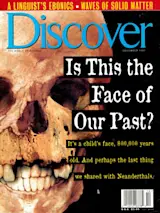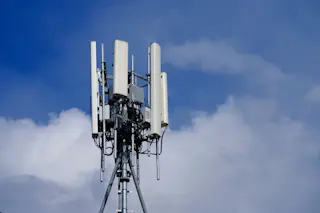Discover asked a number of distinguished science folks what toys they most enjoyed, both as kids and as adults. Here are their replies--sent to us via e-mail, fax, and phone.
Arthur C. Clarke, author of 2001: A Space Odyssey. I spent my youth building working models and always lusted after the big set, which cost some astronomical amount. Meccano (and its various equivalents) was the best toy ever made, and several generations of engineers were inspired by it. I am worried now that the newcomers are only used to looking at images on their computer screens and never touch any real metal, and so are creating disasters for the future.
Freeman Dyson, physicist, Institute for Advanced Study, Princeton. One of my favorite toys was a heavy tractor with a powerful and very slow four-wheel-drive movement, driven by a spring that you had to wind up. Winding it was hard work. ...














